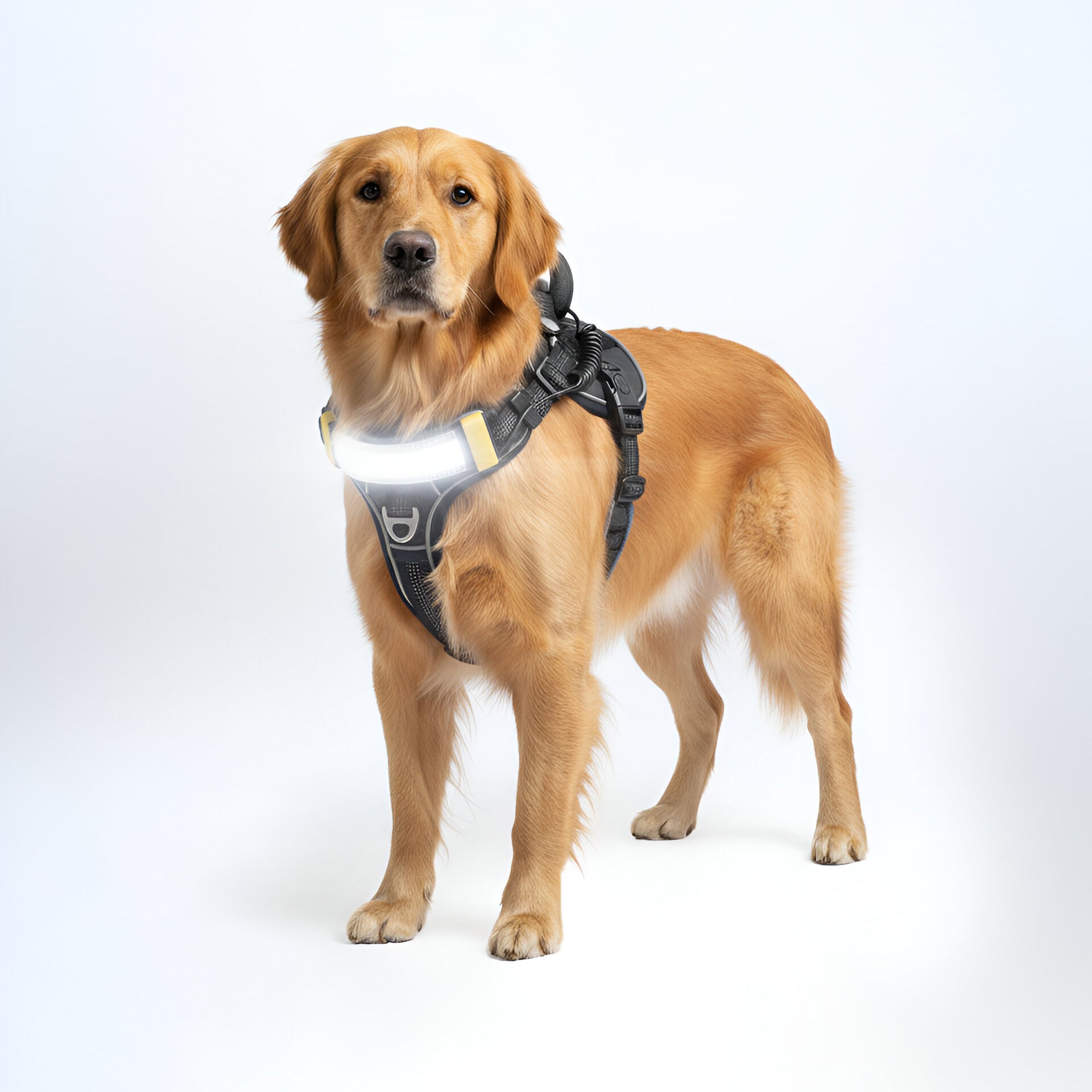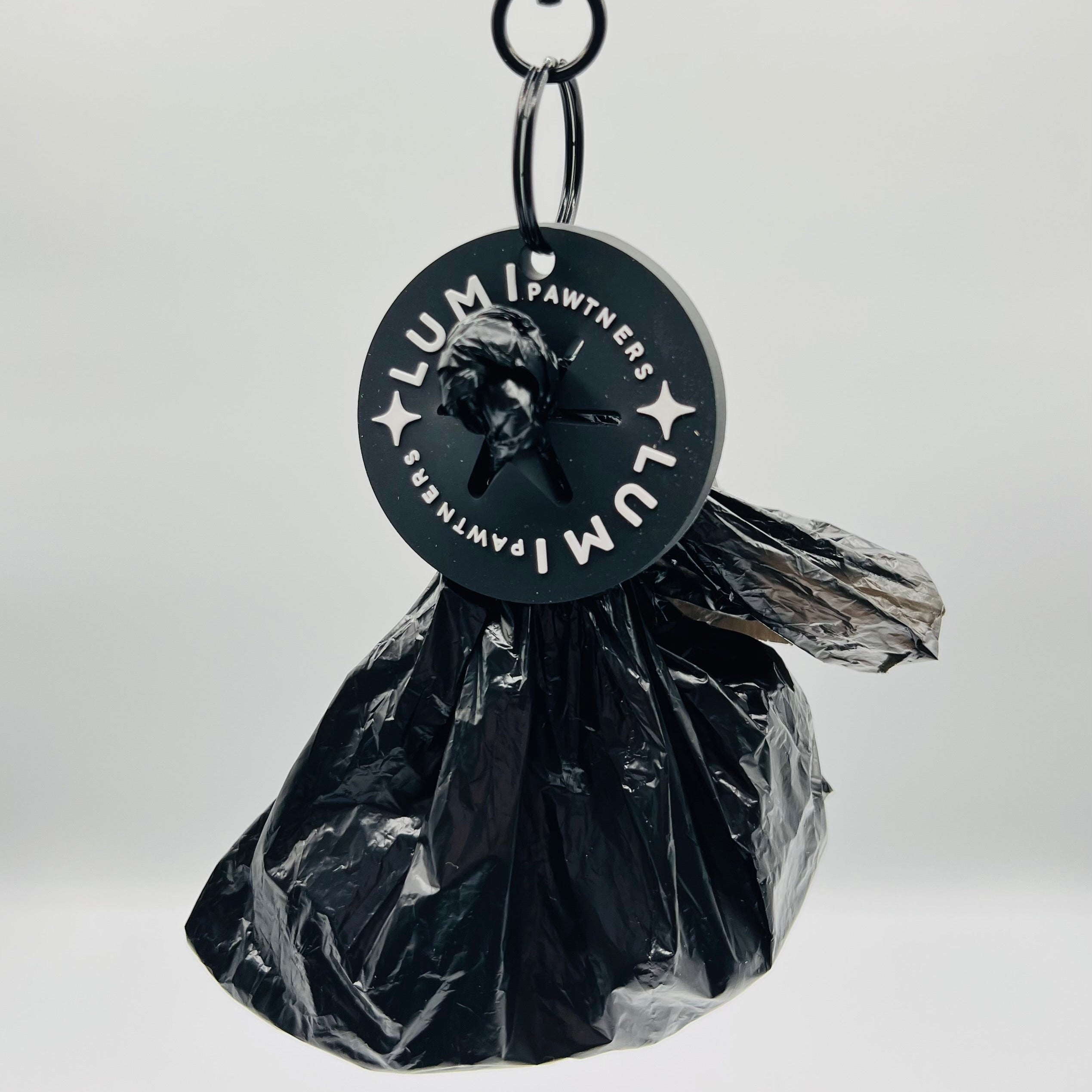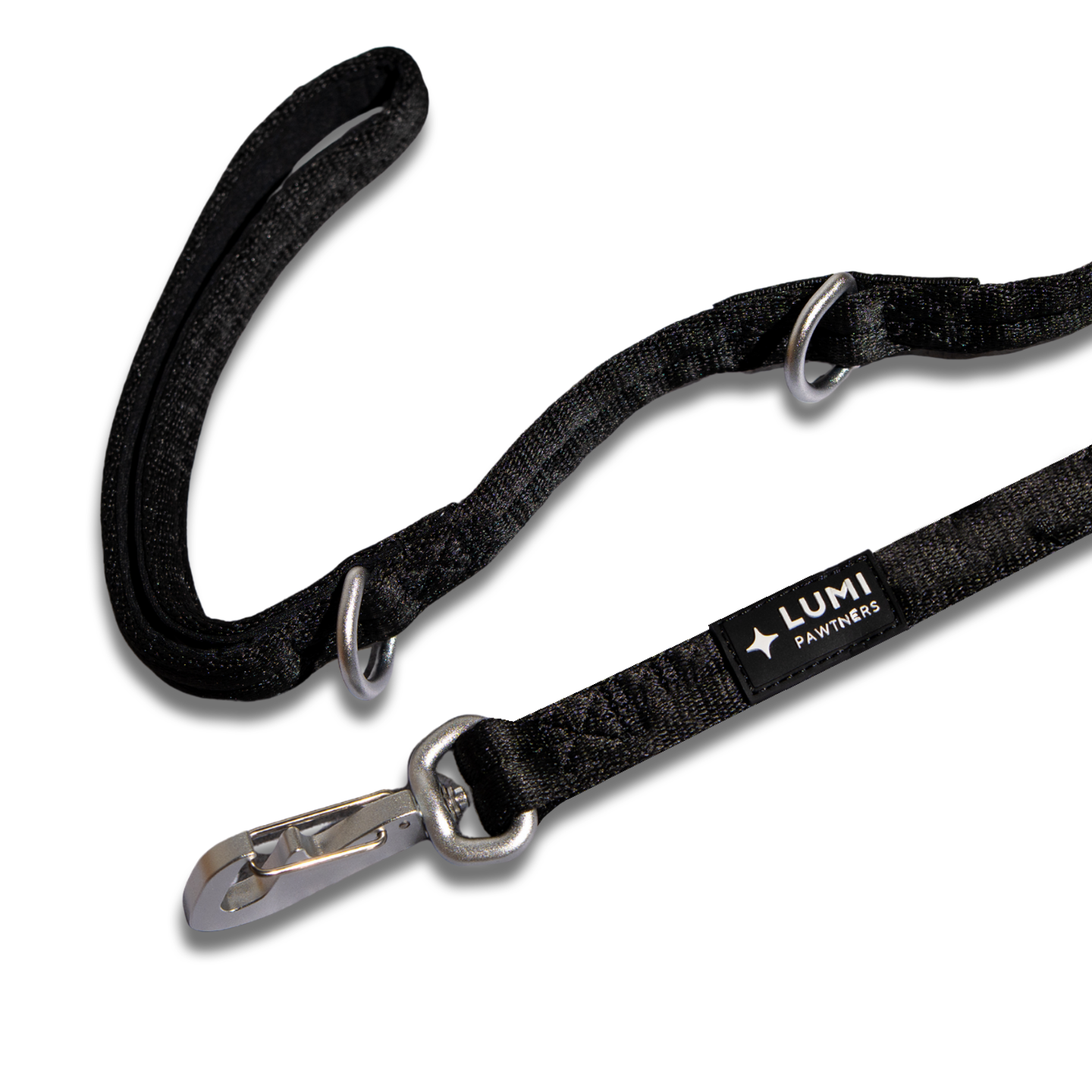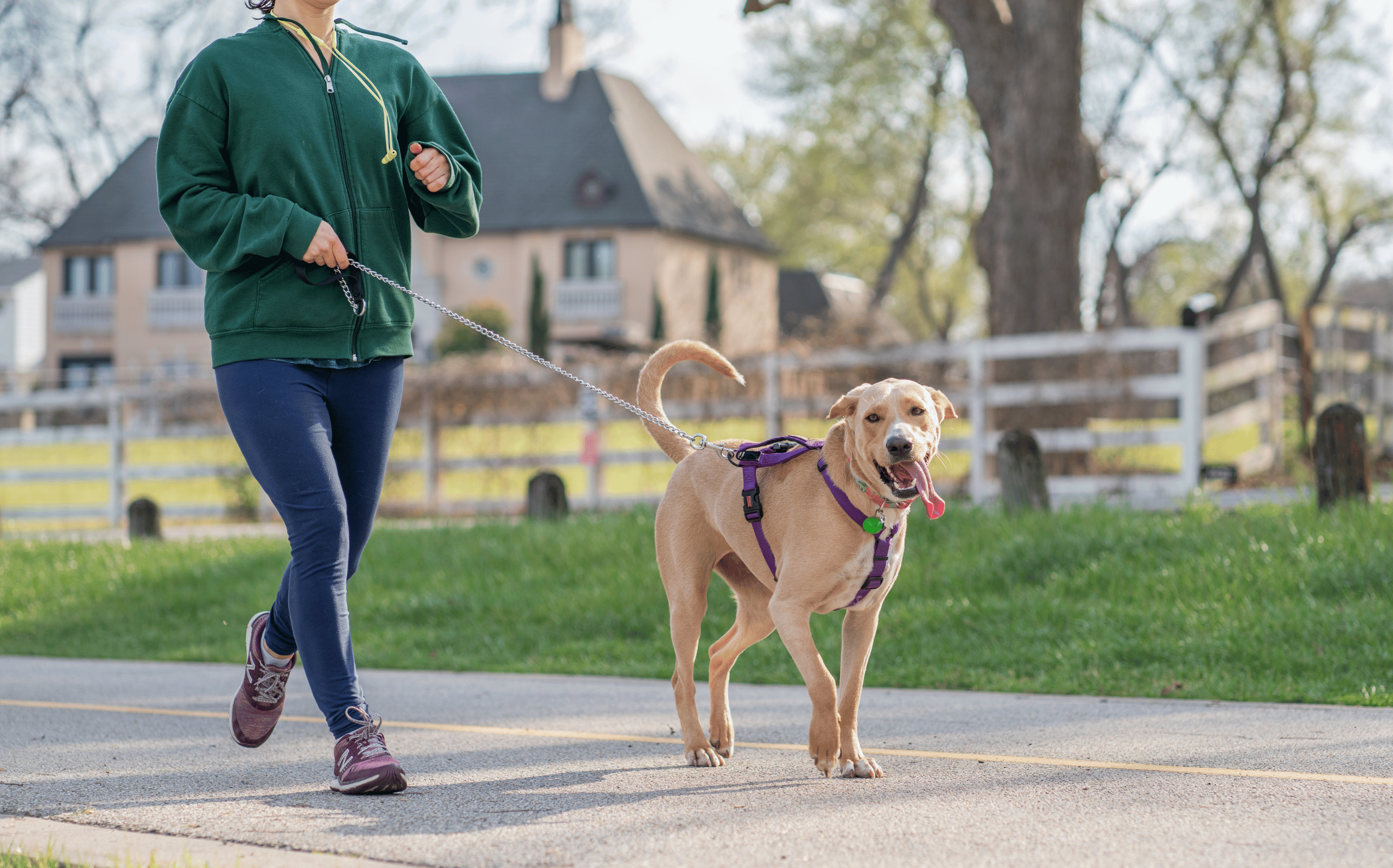Here's a question that'll probably make you uncomfortable: when's the last time your dog had a real walk? Not just a quick trip to the backyard to pee, but an actual walk where they got to sniff things, see the world, and stretch their legs?
If you're feeling a tiny bit guilty right now, you're not alone. Life gets busy. Work runs late. The weather sucks. Your favorite show just dropped a new season. We get it. But here's the thing: walking your dog isn't optional—it's as essential to their health as food and water.
And before you say "but I have a big backyard," we need to talk.
Why Skipping Walks Is a Bigger Deal Than You Think
Let's start with some numbers that might wake you up: according to the Association for Pet Obesity Prevention, a staggering 59% of dogs in the United States are overweight or obese. That's more than half of all dogs. And it's getting worse, not better.
But here's the kicker, most dog owners don't even realize their pet has a weight problem. Studies show that over 50% of the canine population is now overweight or obese, yet many owners rate their chubby dogs as "normal" weight. We've normalized dog obesity to the point where a healthy-weight dog often looks "too skinny" to us.
Why does this matter? Because obesity in dogs isn't just about aesthetics. Overweight dogs face higher risks of:
- Diabetes
- Heart disease
- Joint problems and arthritis (which become a vicious cycle—more weight means more pain means less movement)
- Respiratory issues
- Certain types of cancer
- Shorter lifespans (we're talking years off their life)
And guess what one of the best preventions for all of this is? Regular walks.
But My Dog Has a Backyard...
Look, we love a good backyard as much as the next person. But here's the truth: access to a yard does not replace the need for structured walks. A dog left in a backyard typically does what you do when you're home...not much. They might wander around, maybe bark at a squirrel, and then lie down.
Walking provides something yards can't: mental stimulation. Every walk is an adventure for your dog's brain. New smells, sounds, sights, other dogs, people, that weird thing on the sidewalk...it all engages their mind in ways that staring at the same fence every day simply doesn't.
Dogs are naturally curious creatures with an instinctual need to explore. Walks satisfy that need. Without it, you're likely to see:
- Destructive behavior (hello, chewed furniture)
- Excessive barking
- Digging
- Hyperactivity and restlessness
- Anxiety and stress
- Depression (yes, dogs absolutely can get depressed)
Think of it this way: you wouldn't consider having a treadmill in your basement a replacement for ever leaving your house, right? Same concept.
So How Often DO Dogs Need to Walk?
Alright, the question you actually came here for. And like most things in life, the answer is: it depends.
There's no universal "all dogs need X minutes per day" rule, because a Chihuahua and a Border Collie have wildly different needs. But we can give you some solid guidelines based on what actually matters.
Age Makes a Huge Difference
Puppies are little chaos machines with endless energy... for about 15 minutes before they crash. The general rule of thumb? Five minutes of walking per month of age, twice a day. So your four-month-old puppy can handle about two 20-minute walks daily. More than that and you risk damaging their developing joints.
Adult dogs in their prime (roughly 1-7 years old) typically need 30 minutes to two hours of exercise daily. Yeah, that's a big range. High-energy working breeds need to be at the upper end, while lower-energy breeds can manage with less.
Senior dogs slow down, but they still need movement, arguably more than ever. Research shows that dogs with hip arthritis who exercise for more than 60 minutes per day actually have lower lameness scores than dogs who only exercise for 20 minutes. Interesting, right? The key is gentler, lower-impact activity. Short, frequent walks help keep their joints flexible and their minds sharp.
Breed Energy Levels Are Real
If you've got a Border Collie, Australian Shepherd, Jack Russell Terrier, or Labrador Retriever, congratulations, you've chosen a dog that was bred to work all day. These high-energy breeds often need 60 to 90 minutes or more of daily activity to be mentally and physically satisfied. Anything less and you're likely dealing with a bored, destructive dog.
Meanwhile, breeds like Bulldogs, Basset Hounds, and Shih Tzus? They're perfectly content with two shorter 20-30 minute walks per day. They still need exercise—their health depends on it—but they're not going to require a marathon session.
Here's the truth nobody tells you before you get a dog: breed characteristics are real. That "low maintenance" Husky puppy will grow into a dog that needs serious exercise. Do your research before you bring a dog home, not after.
Health Conditions Change Everything
Got a dog with arthritis, hip dysplasia, respiratory issues, or obesity? You can't just skip exercise because it's harder. In fact, veterinary research confirms that controlled, regular exercise is one of the core treatments for canine osteoarthritis. Exercise increases circulation, decreases stiffness, reduces pain, and maintains strength.
But you do need to tailor it. Shorter, slower walks. More frequent breaks. Maybe swimming or water therapy. Work with your vet to create a plan that keeps your dog moving without making things worse.
Creating a Walking Routine That Actually Works
The best walking routine is one you'll actually stick to. Here's how to make that happen:
Multiple Shorter Walks Usually Beat One Long One
For most dogs (and most people), breaking exercise into chunks works better than one exhausting session. A 20-minute morning walk, a midday bathroom break, and a 30-minute evening walk beats a single hour-long slog that leaves you both wiped out.
This approach also:
- Gives your dog more opportunities to eliminate (fewer accidents)
- Breaks up their day (less boredom)
- Matches their natural energy patterns better
- Fits more easily into human schedules
Timing Actually Matters
Summer heat and winter cold aren't just uncomfortable, they can be dangerous. In summer, sidewalks can literally burn your dog's paws. Do the seven-second test: if you can't comfortably hold your hand on the pavement for seven seconds, it's too hot for your dog's feet.
Walk early morning or evening when it's cooler. In winter, watch for ice, salt, and hypothermia in small or short-haired dogs. Adjust your timing with the seasons. Your dog's comfort (and safety) depends on it.
Consistency Is King
Dogs are creatures of routine. They feel most secure when they know what to expect. Try to walk around the same times each day. This helps regulate their digestive system, improves behavior, and reduces anxiety.
Your dog starts to anticipate walk time, you'll notice them getting excited around their usual walk hour. That predictability is actually good for them. It provides structure and something to look forward to.
Making Every Walk Count
Walking your dog shouldn't feel like checking a box. Here's how to make it better for both of you:
Gear up properly: A sturdy 4-6 foot leash (not retractable for training), a comfortable harness or collar, current ID tags, poop bags, and a water bottle for longer walks. For early morning or evening walks, reflective gear is non-negotiable...remember those pedestrian safety stats we talked about in our nighttime walking guide?
Stay alert: This isn't phone-scrolling time. Your dog's safety depends on your attention. Watch for other dogs, cars, hazards, and your dog's signals that they need a break.
Let them sniff: Yes, walks need forward momentum, but they also need enrichment. That sniffing your dog does? That's how they read the news, check social media, and explore their world. Build in some "sniff breaks" as a reward for good walking behavior.
When Walking Isn't Possible
Life happens. Bad weather. Illness. Crazy work days. Long winters. Here's the thing: you can't just skip exercise entirely.
Indoor alternatives include:
- Tug-of-war
- Indoor fetch (if you have space)
- Hide and seek
- Puzzle toys and treat dispensers
- Stair sprints (if your dog is physically capable)
- Training sessions (mental exercise counts!)
Hiring help isn't admitting defeat—it's responsible pet ownership. Services like Rover and Wag connect you with vetted dog walkers. If your schedule is consistently packed, hiring a walker for midday visits can be a game-changer for your dog's health and happiness. Think of it as outsourcing something important, not failing.
Weather Isn't Really an Excuse
Let's address the elephant: "But it's too hot/cold/rainy!"
Dogs need exercise in all seasons. You just adapt:
Summer: Walk early morning or late evening. Bring water. Watch for signs of overheating (excessive panting, drooling, weakness). Test pavement temperature. Consider a cooling vest for brachycephalic breeds.
Winter: Dog coats for small or short-haired breeds. Paw balm or booties to protect from salt and ice. Shorten walks if it's dangerously cold, but still go. Fresh air is good for both of you.
Rain: A water-resistant dog raincoat is like $20. Quick-dry towels for afterward. Unless it's a genuinely dangerous storm, rain is just... water. You'll both survive.
The exceptions? Truly dangerous weather, heat advisories, severe storms, ice storms, extreme cold. In those cases, yes, stay home and do indoor activities.
The Bottom Line
Walking your dog isn't optional. It's not something you do when you feel like it or when the weather cooperates. It's a fundamental part of responsible dog ownership, right up there with feeding them and taking them to the vet.
Your dog didn't ask to live in your house with limited freedom. They can't exercise themselves. They're entirely dependent on you to meet their needs. And one of their biggest needs is movement—physical exercise, mental stimulation, and exploration of the world beyond your four walls.
The good news? Walking your dog benefits you too. It gets you outside, moving, breathing fresh air. Studies show that dog owners are more likely to meet physical activity recommendations than non-dog owners. Your dog might literally be helping you live longer.
So grab that leash. Yes, even though it's cold. Even though you're tired. Even though your dog went out in the backyard earlier. A real walk, where you both move through the world together, that's what they need. And honestly? It's probably what you need too.
Your dog is already waiting by the door. Let's not disappoint them.
Quick FAQ
How often should I walk my puppy?
Short and frequent is the way to go. About 5 minutes per month of age, twice daily, so a three-month-old puppy gets two 15-minute walks. More than that risks damaging their developing joints. As they mature, gradually increase duration and intensity. Remember: a tired puppy is a good puppy, but an overexercised puppy is an injured puppy.
Is walking my dog once a day enough?
For some lower-energy adult dogs with backyard access, one substantial walk (30-45 minutes) might suffice. But honestly? Most dogs do better with at least two walks, even if they're shorter. It breaks up their day, provides more mental stimulation, and gives them multiple opportunities to eliminate. High-energy breeds definitely need more than once daily.
Can I skip walks if I have a big backyard?
No. We covered this, but it bears repeating: backyards are great supplementary spaces, but they don't replace the mental stimulation and exercise dogs get from actual walks. A dog with yard access who never leaves the property is like a person who never leaves their house...technically alive, but not truly living.
What if I physically can't walk my dog enough?
If you have mobility issues, health problems, or a work schedule that makes adequate dog walking impossible, you have options. Hire a dog walker. Use doggy daycare a few times a week. Enlist a friend or family member. Train your dog to use a treadmill (yes, really, under supervision). The worst option is doing nothing and hoping your dog will be okay. They won't.
How long should each walk be?
General baseline: 15-30 minutes minimum for most adult dogs, though high-energy breeds need 45-90 minutes or more of total daily exercise (which can be broken into multiple walks). Senior dogs might manage best with several short 10-15 minute walks. Watch your dog...if they're still pulling hard at the end and full of energy, they probably need longer walks.
Do small dogs need less exercise than big dogs?
Not necessarily. A Chihuahua might need less total time than a Lab, but many small breeds (Jack Russell Terriers, Miniature Pinschers) are bundles of energy that need substantial exercise. Size doesn't always correlate with energy level. Breed tendencies and individual personality matter more.
My dog is lazy and doesn't want to walk. What should I do?
First, rule out medical issues, pain, arthritis, or illness can make dogs reluctant to move. If your vet gives the all-clear, start small and build slowly. Some dogs are just out of shape (yes, really) and need to build endurance gradually. Make walks fun with treats, new routes, and enthusiasm. If your dog truly refuses despite being healthy, consult a trainer, learned helplessness and severe anxiety can look like laziness.




